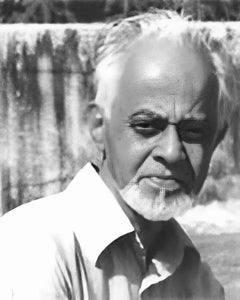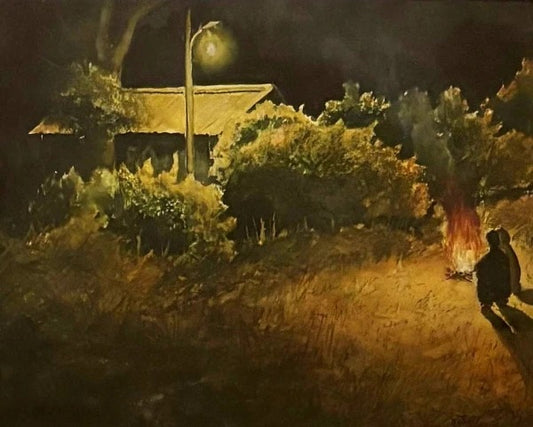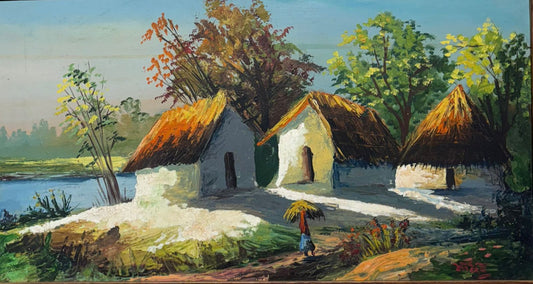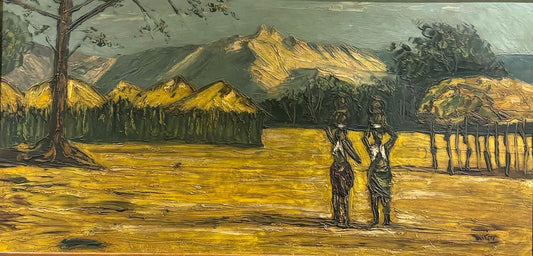
MADHAV SATWALEKAR
Madhav Satwalekar is remembered for a disciplined pictorial language shaped by technical finesse and a wide thematic reach. His work moved fluidly between portraiture, landscape, and cultural narrative, reflecting both classical training and a keen responsiveness to modern life. Whether depicting a quiet interior, a rural scene, or a moment drawn from mythology, Satwalekar rendered each subject with compositional clarity and an emotional restraint that defined his practice across decades.
He studied at the Sir J. J. School of Art in Mumbai, receiving the Mayo Medal in 1935, an early acknowledgment of his formal skill. Between 1937 and 1940, he trained in Europe at the Florence Academy of Art, the Slade School of Fine Art in London, and the Académie de la Grande Chaumière in Paris. This period shaped a modernist sensibility grounded in observation, structure, and a refined approach to color and material. Rather than adopting the avant-garde idioms then emerging in Europe, Satwalekar absorbed the technical strengths of academic realism and adapted them to Indian subjects with sensitivity and depth.
Executed primarily in oil and watercolor, his paintings offered a lens on Indian life that was neither romanticized nor overtly political, but quietly engaged with its textures, moods, and human presence. His inaugural solo exhibition at Mumbai’s Taj Mahal Hotel in 1945 marked the beginning of a long and visible career. Over time, he held more than 30 solo exhibitions in India and internationally, including in Europe, the Middle East, and Africa, placing Indian modern art in dialogue with wider audiences while maintaining a strong sense of cultural rootedness.
His legacy extends beyond painting. As Director of the Sir J. J. School of Art, Satwalekar played a significant role in shaping post-independence art pedagogy, mentoring emerging artists at a formative moment in the development of Indian modernism. His intellectual engagement and institutional leadership paralleled his studio practice, each reinforcing the other. Satwalekar’s contribution lies in his ability to hold together diverse worlds, academic discipline and personal expression, tradition and modernity, without resorting to simplification. His works continue to be part of major collections, valued for their craftsmanship, compositional integrity, and the quiet conviction with which they reflect a changing India. His place within the early post-independence generation of Indian artists remains both foundational and enduring.









